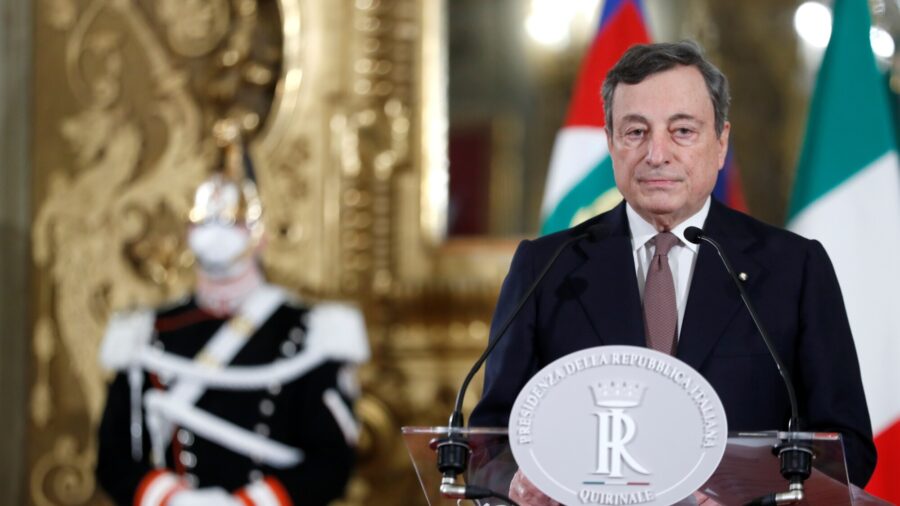ROME—Mario Draghi, the former head of the European Central Bank, was sworn in as prime minister on Saturday to lead a unity government that has to steer Italy out of the coronavirus crisis and an economic slump.
All but one of Italy’s major parties have rallied to his side and his cabinet includes lawmakers from across the political spectrum, as well as technocrats in key posts, including the finance ministry and a new green transition portfolio.
Much now rests on Draghi’s shoulders.
He is tasked with plotting Italy’s recovery from the pandemic and must immediately set to work on plans for how to spend more than 200 billion euros ($240 billion) in European Union funding aimed at rebuilding the recession-bound economy.

If he prevails, Draghi will likely bolster the entire eurozone, which has long fretted over Italy’s perennial problems. Success would also prove to Rome’s skeptical northern allies that by offering funds to the poorer south, the entire bloc can be fortified.
“Your experience will be an exceptional asset for Italy and Europe as a whole, especially in these difficult times,” European Commission President Ursula von der Leyen wrote on Twitter, one of numerous leaders to send their best wishes.
Italy is mired in its worst downturn since World War Two, hundreds of people are still dying of COVID-19 each day, the vaccination campaign is going slowly and he only has limited time to sort things out.
Italy is due to return to the polls in two years time, but it is far from certain that Draghi will be able to survive that long at the head of a coalition that includes parties with radically opposing views on issues such as immigration, justice, infrastructure development, and welfare.
Highlighting the political instability, Draghi’s government is the 67th to take office since 1946 and the seventh in the last decade alone.
Cabinet Mix
Italy’s President Sergio Mattarella asked him to take over after the previous coalition collapsed amid party infighting. Draghi has spent the past 10 days drawing up his plans and unveiled on Friday his 23-strong cabinet, which included eight women.
The ministers, all wearing face masks, were sworn in one-by-one in a frescoed room in the Quirinal Palace before heading over to government headquarters for their first cabinet meeting.
Draghi told them their priority was “to safeguard the country” and urged them to lay aside their rivalries and work as one, ANSA news agency reported.
Eight of the ministries went to technocrats, with the rest split amongst the six main parties that back the government—four for the 5-Star Movement, the largest group in parliament, three each for the Democratic Party, the League, and Forza Italia, and one apiece for Italia Viva and LEU.
As finance minister, Draghi called on an old colleague, Daniele Franco, the deputy governor of the Bank of Italy, while the sensitive job of justice minister was handed to the former head of the constitutional court, Marta Cartabia.
He also looked outside the political sphere for two new roles—technological innovation, which was entrusted to the former head of telecoms firm Vodafone, Vittorio Colao, and ecological transition, given to physicist Roberto Cingolani.
These twin positions play into demands by the EU that a sizeable chunk of its recovery fund should be used to promote the digitalization of the continent and to shift away from a dependence on fossil fuels.
Draghi, a reserved figure who has no profile on social media platforms, will unveil his program in the upper house of parliament on Wednesday and the lower house on Thursday.
Confidence votes will be held in both chambers and with just the far-right Brothers of Italy outside the cabinet, he looks likely to win the biggest majority in Italian history.
However, some members of the 5-Star Movement, which was created in 2009 as an anti-system, anti-euro protest group, have said they might vote against Draghi, threatening a party schism.
By Crispian Balmer

